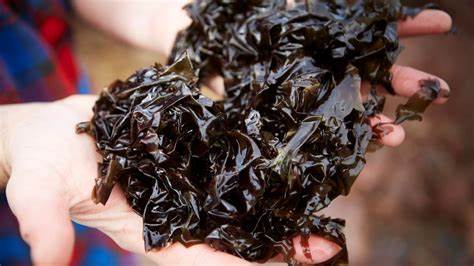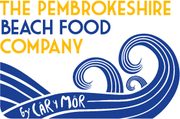
LOVELY LAVER .... ONE OF THE FOOD WONDERS OF THE WORLD
By Jonathan Williams, founder of Pembrokeshire Beachfood Products
Its not just the flavour of Laver that I love, but also the sense of place it represents. Laverbread is the most famous of Welsh delicacies and is a fundamental part of Welsh culture and cannot be found anywhere else in the world.
Wales, Pembrokeshire, the beach and the sea – no other food represents all of these as well as laver seaweed and that is why it is the cornerstone of our menu. No other ingredient in my eyes could do all of this.
I also love the fact that in Japan they developed a delicate way of stripping laver seaweed down to make intricate sushi sheets, we, in Wales, simply battered the seaweed into submission by boiling it to death. But if it wasn’t for this boiling, laverbread would never have existed and the culinary world would be a much poorer place without it.
The Taste
Laver seaweed has a high iodine content that gives it a distinctive marine olive flavour, it is not always a food you will fall in love with straight away - it’s a grower. It needs time to take it all in, trust me!
Ok I’m getting ahead of myself, but if you haven’t tried, then do, and if you have then make it part of your everyday cooking, your food will be all the richer for it.
To me laverbread (bara lawr) has to be on of the food wonders of the world, (note that I am Welsh and so completely biased), but before you click away at least hear out my case.
1. It is only found in Wales.
2. It is harvested from rocks in the wilds of West Wales which have the second largest tidal range in the world and takes the full force of the Atlantic storms.
3. Not many other foods take 10 hrs to cook.
4. No other food looks so unappealing after 10 hours of cooking.
5. It is a powerhouse of nutrients, vitamins and minerals and is completely at odds to the typical meals consumed by the Welsh public in the 21st century.
6. Its versatility is only being discovered now in modern day cooking.
7. It tastes sublime.
What is it?
Laverbread is made from boiling laver seaweed for up to 10 hours with a little salt and then blending to make a greeny black puree, that is it. The name is confusing as it is not actually a bread, though if you put laverbread in your dough it does make delicious bread!
The name comes from how they used to process laverbread before the days of blenders and mincers. The traditional way was to break it down and kneed it like you would with wheat to make bread. Laver is only one cell thick but is surprisingly tough and requires this processing to make it palatable.
Welshman’s Caviar
Richard Burton is a Welsh legend from the Golden age of Hollywood, he dubbed Laverbread the “Welshman’s Caviar”, I think it fits the description perfectly! Our Welshman’s Caviar is dried toasted laver seaweed handpicked by lovely Welsh mermaids in West Wales. We have been experimenting with laver seaweed for years on the Beach Shack and we constantly had an issue with the shelf life of traditional laverbread, so we developed our Welshman’s Caviar. Once you dry out an ingredient the shelf life becomes much longer and the properties change to a dry crispy texture.
For me it is a nod to the tradition of eating laverbread in Wales and the culture it represents while at the same time taking a modern twist to it. It is the first product we developed for retail at the Pembrokeshire Beach Food Company and I love it!
It is simply just laver seaweed, that is it. Nothing else is added to it.
Sometimes you just have to let nature speak for itself and that is what we do with Welshman’s Caviar. Laverbread is mixed with salt and water and nori in Japan is traditionally flavoured with roasted sesame oil, both are really good but nothing is quite like pure laver.
So that’s laver seaweed for you, a true food wonder of the world.


